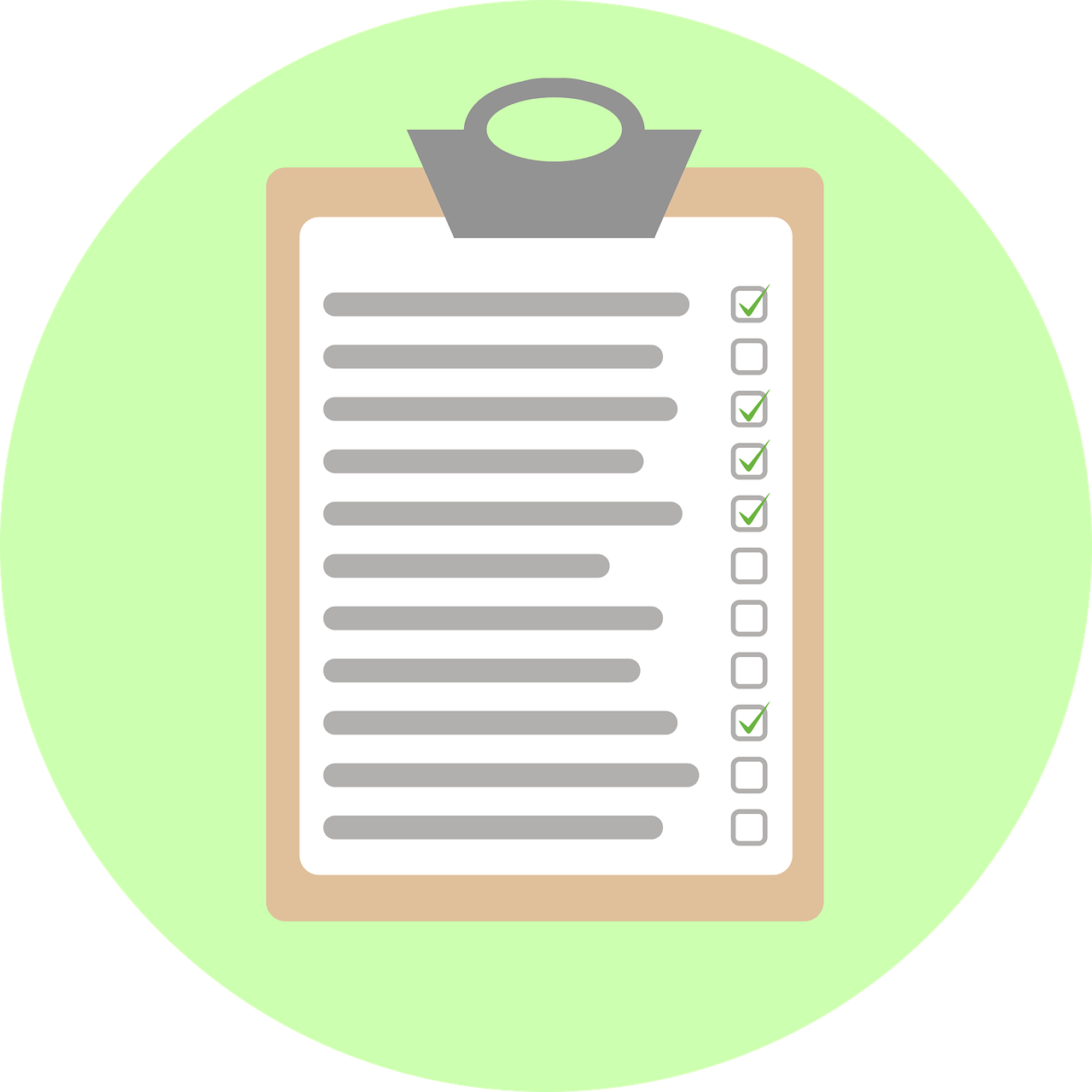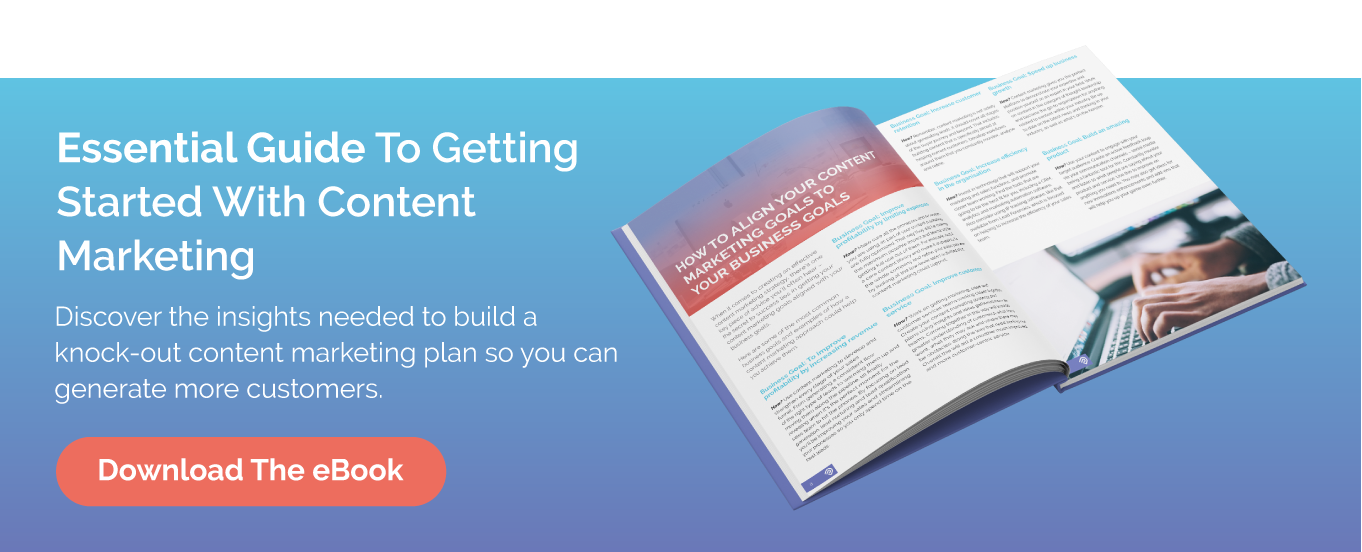Thought-leadership is one of the best ways to establish topical and industrial authority. By demonstrating leadership within a certain field or on a specific topic, businesses (and individuals) can cement their own unique brand as the frontrunner within their niche.
Content Marketing - the foundation of the Inbound Marketing methodology - is the ideal platform and activity to leverage the power of thought leadership - regardless of industry, topic or business size.
That being said - demonstrating thought leadership effectively is often easier said than done.
This article will guide you through the basics of a thought leadership article.
If you read to the end, you will:
Why Should You Construct A Thought Leadership Article
Implications of Thought Leadership Articles
We’ll start with the implications.
By definition, this type of content implies you are an authority in your niche with something interesting to say. It implies that your thoughts and insights are valuable and worth sharing - and that people want to engage with, discuss and share your ideas.
A thought leadership article is an opportunity for you to leverage your position within an industry to demonstrate your expertise and credibility; it's a platform to share your insights with engaged audiences and to provide them with real value.
The difference between a thought leadership article and a run of the mill blog article, therefore, is that the former communicates a much deeper level of insight and value. Often, it's coupled with an opinion (the best thought leadership articles share opinions in a neutral way, opening the table for discussion and engagement).
Used properly, a thought leadership article can generate tangible metrics. A well-written and genuinely insightful piece of content has the potential to increase relevant website traffic, drive engagement through social shares, alongside huge contributions to brand visibility and audience reach. If you are able to spare the time and resources to do it properly, thought leadership articles can form a sturdy foundation for your content marketing strategy.
Next, the benefits.
Benefits of Thought Leadership Articles

The very act of writing a thought leadership article has personal benefits, as well as organisational ones. As you write the piece, you are refining, developing, and strengthening your ideas. You have the power to edit before publishing, meaning that you can reject weak ideas and make your insights as strong and clear as possible before sharing.
If you properly engage with this format, you have a real opportunity to refine your thought processes and deliver a powerful, impactful, and memorable message to an already captive audience.
It also allows you to utilise your trailblazing ideas to position your brand as an authority. By giving your audience an insight into how your brand has evolved in line with a specific topic, you add a layer of credibility that's often hard to achieve any other way.
And finally, the outcomes.
Outcomes of Thought Leadership Articles

By providing insights that are important, useful, and current, you demonstrate credibility and knowledge. If promoted correctly, this type of content will help increase your personal online visibility as well as your business's. It may also lead to a potential increase in connections and customers, acting similarly to word-of-mouth referrals.
It is important to invest time and resource into a thought leadership article because if you don't, it will be immediately obvious. People won't engage with half-baked ideas. If these are attached to your name and brand, it can be damaging.
With great power comes great responsibility, and as a thought-leader, it's your responsibility to place effort into your messaging - continually.
What Are The Technical Steps To Create A Thought Leadership Article?

The first step is to choose a topic that ticks the boxes we've outlined above. Will your article be important, useful, insightful, and/or current? What is the key message you want to ensure you convey?
For this stage, brainstorm potential topics in question form and prioritise those which spark your own sense of intrigue. Think about questions you get asked often, epiphanies you have had, or decisions you have made where the outcomes have been particularly effective.
The idea is to demonstrate leadership; distil each article into one key takeaway that illustrates your influence and resonates with the reader.
Try to identify the things you would share with yourself in the early stages of your career if you had the opportunity.
With a topic in mind, the construction of your article can begin.
How To Write A Thought Leadership Article
There are many ideas explored and noted within this 10-step guide that are directly applicable to constructing a thought leadership article; and, although a thought leadership article functions slightly differently from an essay, there is a lot of valuable information we can use here.
Some of the tips are obvious (“all of the paragraphs have to be arranged in a logical progression”); however, his level of explanation and exploration of how an essay should fulfil its purpose provide true value.
We'll only briefly touch upon the most relevant information outlined in the document this is based on, so we advise giving the whole thing a read.
A section at the end of this piece explores the similarities and differences between the formats, and how to factor these into your writing.
Levels Of Resolution Applied To Thought Leadership Articles

The most standout section is number two: Levels of Resolution.
These are seven individual levels on which a piece of writing should work, in order for the whole to be effective.
Levels 1-3
As Peterson notes, levels one to three are words, sentences and paragraphs.
Each should be constructed well. The right words should be used within sentences, so they effectively communicate thoughts. Sentences together will communicate ideas. Each paragraph should contain one idea.
Level 4
Level four is logical progression. Do your paragraphs work together towards communicating a coherent concept?
Level 5
The essay (or article in our case) as a whole is the fifth level of resolution. Does yours successfully deliver its message? A lack of creativity, original thought, or grammatical know-how may be detrimental here.
Level 6-7
Beyond the piece of writing itself are the reader and the culture it will function within, levels six and seven respectively. Each carries its own assumptions and each requires the writing to be pitched slightly differently.
We will approach these levels of resolution in reverse. Consider these tips applicable as a wider scale guide for writing online, too.
Who Are Your Readers & What Culture Do They Exist Within?

Your article must resonate with the reader. It must provide value and be engaging enough to make someone read the entire thing and share it with their friends, family or colleagues. The insights within must not be banal.
When constructing your article, consider the following:
-
- Who are you trying to help?
- What value can you provide?
- What assumptions will your readers bring with them into your article?
- Should these be challenged or are you supporting an existing opinion?
-
- Which platform(s) will you promote your article through?
- Do these platforms have specific guidelines that must be taken into account while writing?
- If you were the reader - would you read the article to the end?
- Have you caught the readers attention in the opening paragraph?
What Is The Logical Progression Of Your Article?

This section is to ensure you have a clear idea of what you want to say and how you want to say it before putting pen properly to paper (or finger to key).
After choosing your topic and considering the audience of your article, write a scaffold of the points required to answer the question you have chosen to write about.
Initially, the scaffold should be a list of 10-15 bullet points which, when combined, convey the full answer to the topic question. Spoken aloud, these should pique someone’s interest and let them know what they can expect to learn from your article.
The next stage is adding notes to each bullet point. This doesn’t need to be polished prose at this stage, just add words and ideas that contribute to the logical progression. These notes will be refined and added throughout the process as you edit.
A stock introduction and conclusion can be useful tools for ensuring the logic works, but they should not be included in the final piece. Respectively, they should answer the questions "what is/was the purpose of this writing?" and "how will/did it proceed?".
How To Construct Your Thought Leadership Article

Levels one to three - "words, sentences and paragraphs" should function perfectly.
Brevity and beauty are factors you must consider. Deep insights do not need jargon to be communicated effectively; quite the opposite. As a thought leader, you should be able to communicate your insights simply and effectively to people who are still working toward your level of understanding.
The values prioritised in essays are worth, beauty and elegance.
A long piece may require subheadings; spend time and effort on these. They offer concise and brief explanations of what each section will entail (they'll also be useful from an SEO perspective). These are most effective when posed as a question or an action.
We recommend writing and editing your article until it is as good as you can make it. This may take several revisions and longer than you first anticipated, but the outcome will be worth it in the end.
Advice only goes so far. To achieve a successful thought leadership article you must write, edit and repeat. It is recommended to rewrite each sentence and choose the better one, and to keep doing this until they can't be improved anymore.
It may be hard, time-consuming work, but eventually, your ideas will be communicated as strongly as possible.
Where Is This Advice Most Relevant?
.png?width=1280&name=laptop-6081424_1280%20(1).png)
It is noted that the word 'essay' means 'to try'. The medium is a way to try and articulate your thoughts, refine your ideas, clarify your concepts, and eventually increase your knowledge and eloquence. This, he argues, has far-reaching implications and benefits.
We think a thought leadership article provides a similar opportunity for a professional within their industry; it allows you to articulate the driving factors behind your brand, convey leading ideas within your niche, interpret your concepts, simultaneously increase and share your knowledge, and enhance eloquence.
In both, you must avoid jargon and technical terminology. It doesn't make you sound clever, it simply confuses people. Such language is described as “camouflage” which professors marking essays can see straight through.
In an article, you will need to reference quotes, data, and ideas. The method of referencing will be less stringent than in an academic essay, though, which segues us nicely onto the next section.
Where Is This Advice Less Relevant?

From execs to directors, your readers will often be those in your given industry. As such, their needs are slightly different to readers of academic essays. Your readers want actionable tips, whereas essay readers want ideas. Your article should start with a problem and deliver a solution. The problem and solution must both be real and relatable, otherwise, the reader will not care.
You have the privilege of being able to ask for input, which isn't afforded in academic essays. Pass the piece, or sections of it, around the relevant department(s) at your workplace. Get feedback; field-test the ideas. Perhaps present the scaffold to your employees and see whether it resonates or generates enthusiasm and questions. If not, go back to the drawing board.
You also have some flexibility in methodology; personal anecdotes and stories may not resonate as effectively in essay format, but they can contribute to readers' alignment with your values and insights as well as making the piece seem more personable.
And finally, the number of edits and rewrites may be lower for industry thought leadership pieces.
Bonus Section: How To Write Actionable Tips In Thought Leadership Articles

We said that readers of a thought leadership article will be looking for actionable tips. This is to ensure they can draw benefit from your insights.
Here are some of our very own actionable insights you can use when creating your thought leadership article:
-
- Read your article aloud at various stages of its construction.
Read the scaffold out loud to test the underlying logic flows. Read the draft aloud to identify particularly good or bad sentences. Read the updated scaffold aloud. Read the final version aloud. Your mind is organised verbally, so reading aloud helps to make sure everything flows properly.
-
- Write about something that generates an emotional response within you.
If you are in the position in your industry where you can provide thought leadership, hopefully, you have some enthusiasm as a whole. Run through a list of potential topics and imagine speaking to your friend in the pub about them; which would be most engaging? Write about that.
-
- Mimic, but don't follow, the industry.
Contribute to discussions that are in vogue, but don’t just echo what everyone else is saying. Provide original insights. In fast-moving industries like tech, timely thought pieces can really set the author and their organisation apart from the competition.
-
- Don't be afraid to trim words, sentences, or even entire ideas from your piece.
Not everything you initially think is relevant or valuable will be included in the final draft.
The Pen (Or Keyboard) Really Is Mightier

This article balances the technical aspects of construction with the considerations you must make to ensure your thought leadership article is interesting and valuable.
First and foremost, start collecting ideas and drawing inspiration for your next article. It will take time, dedication and practice - but the results are well worth the effort.
If you're stuck for ideas when it comes to putting together great pieces of content, or simply want the expertise to elevate your original thought leadership strategy more effectively, why not get in touch with us today?
We'll be happy to lend a helping hand and ensure your content reaches the right audience - every time.





